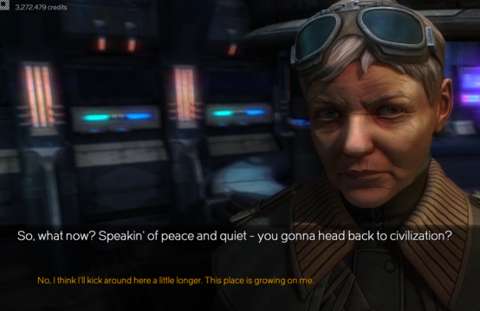INTRO:
There had been many games like Descent: FreeSpace and Wing Commander: Privateer (henceforth referred to as “Privateer”). In these space sci-fi games, the player takes on the role of a freelance individual who can choose to be a pirate, merchant or mercenary, or a combination of these.
However, there is a noticeable trope about these games; the player’s vessel is almost always a nimble vessel, which can somehow haul cargo about too. In combat, the player’s vessel generally takes the role of strikecraft, i.e. fighters.
There were few games that tried to put the player into a vessel which is larger and heavier. For example, the first Independent War came very close, but the second entry in the series returned to the usual formula that Privateer had done.
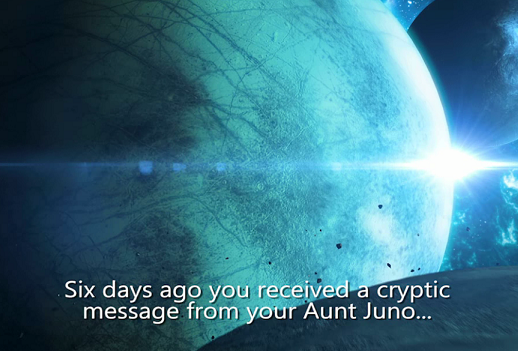
That brings this review to Rebel Galaxy. This is a game which has been made by a two-person team that is Double Damage. Double Damage tries to replace the usual fighter ship with a capital ship. To some extent, their efforts do result in a game that plays differently from the usual Privateer-like fare. However, the impact of this difference is diminished by some unseemly simplification in the gameplay, as will be described later along with other issues which the game has.
PREMISE:
Rebel Galaxy takes place in a sci-fi universe where humans and other sentient species co-exist, albeit not entirely peacefully; this might seem a bit new to Privateer-like games, but it has been done before in games like Space Ranger and its ilk.
Ultimately though, the myriad of races does not provide substantial richness to the story of the game; the non-human species are rather archetypal. For example, the badger/bear/hyena-like Murath are bluntly-spoken brutes who like mining. In fact, non-humans seem to act a lot like humans do, like lounging around in bars and collecting vintage items.
To put it simply, there are only aliens in the game for the sake of having people who do not look like humans. There is a lost opportunity here to create a rich backstory of diverse cultures across species.
Moving onto the main plot of the game, the player character is a human who has come to a frontier sector. (The player is referred to as a human by non-human characters, by the way, even though the player character is never seen in person.)
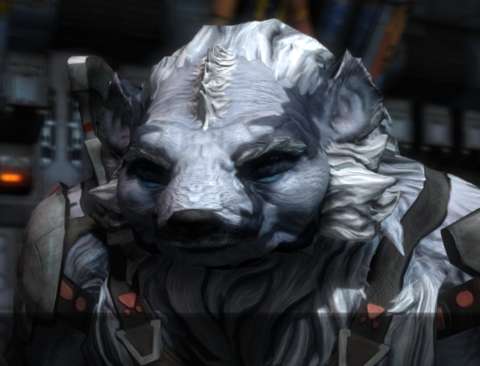
The player character has been given an entire ship – albeit an obsolete model with an obsolete load-out. There is also a message by one Aunt Juno, who is an estranged relative whom the player character has not heard in years. Finding Aunt Juno appears to be the initial goal, but soon, the player comes across other things, including a seeming MacGuffin and a powerful AI. This game is not short on having established sci-fi tropes.
On the other hand, the story would not have absurd elements, such as planet- or star-destroying weapons. Rather, it makes use of the oft-overlooked deux ex machina in stories with space sci-fi settings: the means of traversing distances in space which are too vast even for light-speed travel. It can seem refreshing that the focus of the main plot of the game is about something that is more practical than a weapon of stellar destruction.
Unfortunately, if the player is expecting some epic and involved story, he/she would be disappointed. It will not take long for a determined player to follow the main plot to the end. Even then, the destination may not seem rewarding, the journey even less due to some contrived gameplay designs. This will be described later.
THE PLAYER’S SHIP – IN GENERAL:
The player’s currently owned ship is his/her most important asset, as is to be expected of a Privateer-like game. In fact, the type of the ship and its parts represent the game’s progression system. To speak more plainly, the player will be swapping ships, as well as switching out parts for better ones (the latter is made easier because parts are sold and bought at cost).
In fact, doing so is the only way for the player to know how far he/she has come in the gameplay experience, the story notwithstanding. Everything else that is not story-related eventually feeds to this aspect of the game.
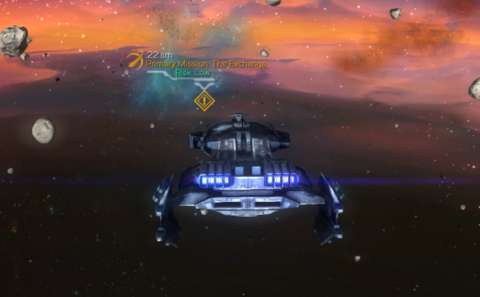
It is unfortunate that Double Damage had not been a bit more ambitious. Considering that the player is expected to invest a lot in his/her space-ship, it is unfortunate that the player could not invest more in something else, such as space stations. After all, the game takes place in a frontier region, which would have been a great (if risky) place for economic ventures.
One aspect of the player’s ship that is not mentioned much, if at all, is the crew. A capital ship would ostensibly require more management than a single-seat fighter, but the player does not need to worry about crew at all. Perhaps this was done in order to ensure the accessibility of the gameplay, but there is a lost opportunity here to introduce a facet of complexity to the gameplay.
WEAPONS:
As to be expected of a Privateer-like title, Rebel Galaxy will make it very clear early on that the galaxy is a dangerous place, and the frontier even more so. Any ship is very likely to be armed; even certain merchant vessels can sport an incredible number of guns.
Speaking of guns, Rebel Galaxy has the usual space sci-fi arsenal, which includes lasers, missile launchers and energy projectiles. However, there are also more peculiar weapons, such as flak cannons, which are effective against strikecraft and incoming missiles.
Weapons can be mounted on three types of hardpoints on the player’s capital ships: turrets, secondary ports and broadside ports.
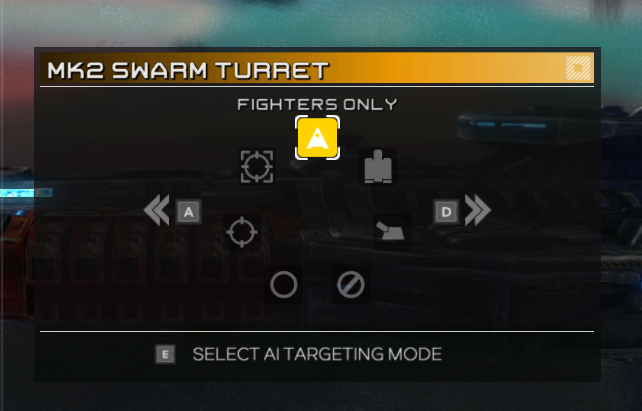
TURRETS:
Turrets are hardpoints which allow full rotation of weapons, at least along a horizontal plane relative to the fuselage of the player’s ship. Ostensibly, these are the weapons which are most likely to be able to shoot at enemies.
Unfortunately, there are many limitations with turrets which make them difficult to utilize for maximum effectiveness. These issues also highlight some bad decisions on the developer’s part regarding user-friendliness and believability. They will be described shortly.
AUTOMATION OF TURRETS:
Fortunately, the player is not required to control every turret on his/her ship. The turrets have their own scripting which lets them target and shoot at enemies that are within range. This lets the player focus on maneuvering his/her ship, which is perhaps a more important thing to do in combat.
Turrets can be directed to target certain enemies above others, but these options are made with broad strokes with no refinement. For example, a turret can be set to target capital ships, but not specific ones. The most which the player can expect from this turret is that it will continue to fire on a capital ship which it has targeted earlier as long as it remains within range.
There is no way to make queues of target prioritization. As an elaborative example, the player cannot set a turret to target fighters if there are no capital ships within range. There is no way to make turrets target the weakest ship or the most threatening enemy in range either.
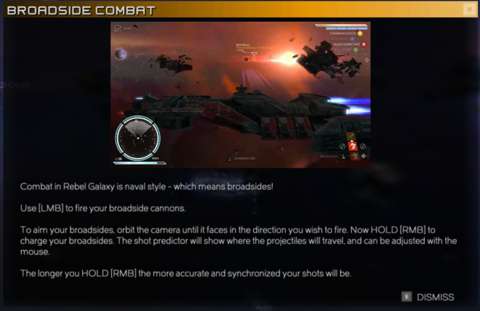
MANUAL CONTROL:
The player can choose to take control of a cluster of turrets in order to manually shoot at specific targets. However, this only sounds good on paper; in practice, it is almost impractical.
For one, the player cannot choose which specific turret to take control of. The player can only choose to control one type of turret, and the player will then control all of the turrets of the same type. For example, choosing to use laser turrets will have the player controlling all laser turrets on the player’s ship, regardless of the types of lasers which they use.
This rather brutish approach to the design of turret controls can be frustrating to deal with. This is perhaps even more so for players who prefer to use the keyboard for Privateer-like games, because Rebel Galaxy actually had been designed with Xbox and Playstation controllers in mind.
Part of the designs for turret controls is an aim-assisting feature. When the player controls turrets and brings the firing cursor over to a target, the cursor will snap onto the target, or parts of the target, if the target happens to be a capital ship. Ostensibly, this will allow the player to shoot at and destroy parts of an enemy capital ship, such as knocking out its engines or particularly troublesome turrets.
Unfortunately, this is not actually practical. One of the reasons is that turrets are quite small when compared to the capital ships on which they are mounted on. There is also no feature to highlight the turrets on an opposing capital ship.
Unless the player has memorized exactly where the turret hardpoints are on specific types of capital ships, the most reliable way to know which turrets are which is to let them fire. Even then, this method is more effective if the turrets are laser turrets than if they are of other types.
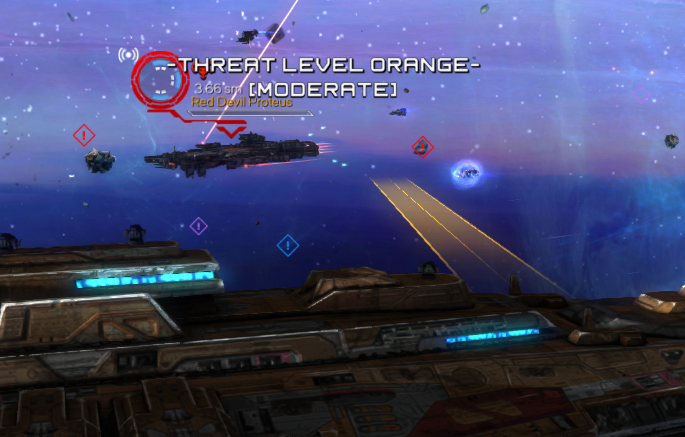
The player may also eventually realize that the aforementioned aim-assist feature does not work against missiles and mines by default, even though some of these may seem larger than strikecraft. The fact that the game highlights incoming missiles makes this omission even more glaring.
To enable the targeting of mines and missiles, the player will have to purchase the ship components which allow this. This can seem contrived.
TURRETS SHOOTING AT THE HULL OF THE PLAYER’S SHIP:
The shape of the player’s ship is a significant factor in the performance of turrets. As an illustrative example, there are ships which have ridge-like structures running along the “spine” of their fuselage. These structures will prevent turrets on either side of the ship from firing at enemies on the other side, at least generally speaking.
However, the obstruction that is put up by the shape of the player’s own ship does not always prevent its turrets from firing at obscured targets. Such an occurrence can be seen when the player is targeting an asteroid that is vertically beneath the player’s ship. The player will see the turrets firing anyway, seemingly hitting the player’s ship but not inflicting any damage whatsoever.
This is of course a minor complaint, but it does emphasize the lack of polish in the design of this game.
TYPES OF TURRETS:
Although there are ostensibly many turrets which the player can mount on his/her ships, many of them function a lot like each other. They can be lumped into laser, burst, missile and flak turrets; veteran players would not be surprised by these.
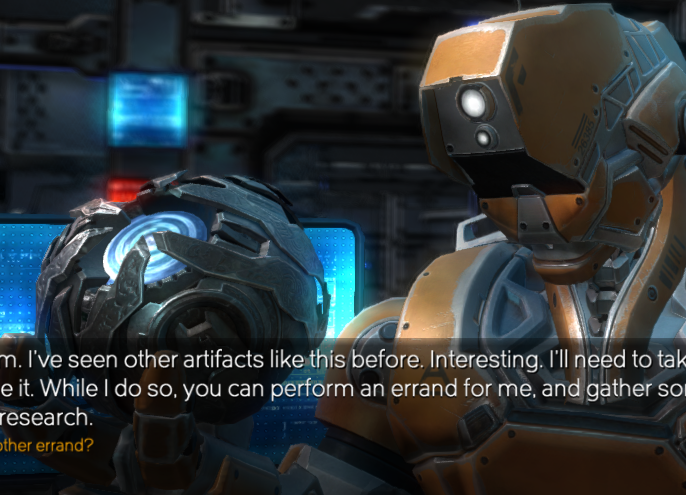
Laser turrets need time to charge up, but they are generally the most reliable turrets around. This is mainly because their beams immediately hit whatever they are aiming at. They are supposedly several different types of laser turrets, but their differences are merely statistical and aesthetic.
The mining laser, which is expressly needed for a certain gameplay element, may seem to be an exception, but that gameplay element is not worth the trouble spending time on, as will be explained later in the section about mining.
Burst turrets fire volleys of shots. According to their descriptions and stats, they may seem useful, e.g. scatter turrets are supposedly effective against fighters and pulse turrets have the longest range of all turrets. However, in practice, they are not as effective as laser weapons, mainly because their munitions have to travel through space. The turrets do happen to lead targets, but ultimately, not all of their shots will hit.
Missile turrets would have been useful, if they have higher firing rates and are not shackled by the gameplay element of ordnance (more on this later). In the latest build of the game (at least at this time of writing), missile turrets do not have high enough damage output rates to compete with the other kinds of turrets, even if each missile does hit hard. Furthermore, missiles can be shot down.
Finally, there are the flak turrets. They have been designed to be used against fighters. Indeed, their prodigious damage output suggests so. However, they are the shortest-ranged of all turrets, and incidentally, many fighters will have weaponry that outrange them. Enemy fighters are also smart enough to avoid flying into flak clouds.
Considering how underwhelming the other turrets are, it will not take long for the astute player to swap out every turret for laser turrets.

BROADSIDE PORTS:
In most Privateer-like games, capital ships tend to either resort to turret batteries for offensive purposes, or otherwise have absurd prow-mounted weaponry. Rebel Galaxy tries to be different from the rest by having guns on the broad sides of capital ships.
These guns are very powerful. In fact, they are the primary means of knocking out another capital ship, so it is in the player’s interest to upgrade them whenever possible.
Anyway, to use broadside guns (or “broadsides”, as they are simply called), the player must orient the camera such that it is looking outwards from either side of the ship. Doing so enables the “charging” and aiming of the broadsides. Coincidentally, the default camera mode is oriented around the use of the broadsides, so this should be simple.
There is not much the player can aim at when using broadsides; at best, the player’s ship can fire in a 120-degree arc from any side. However, aiming the broadsides also happen to “charge” them.
Interestingly, “charging” them does not actually increase their damage. Rather, the broadsides will fire their munitions in tighter clusters and with better leading of the target when they are charged more. Indeed, a full charge makes hitting an opposing capital ship a virtual certainty. Full charges can also hit gunship-class fighters quite reliably.
The gameplay element of broadsides could have made Rebel Galaxy out to be quite different from other Privateer-like games. Unfortunately, its implementation appears to have necessitated the restriction of the movement of the player’s ship to a 2D plane. This limitation would have made its gameplay quite comparable to the naval combat in Assassin’s Creed: Black Flag, which do not make for a good impression.
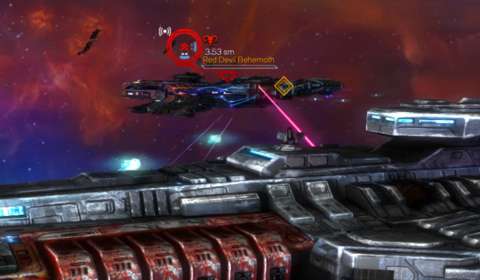
One would wonder whether the game’s focus on the use of the controller had led to this limitation. Of course, the keyboard would not have provided a guarantee that it can be used to control fully 3D movement while comfortably facilitating the use of broadsides, but the controller, with its more limited input options, certainly could not have done so.
SECONDARY PORTS:
Capital ships also have so-called “secondary” weapons. These are actually fire-and-forget weapons, which ostensibly cannot be aimed at all. The weapons which go into these slots are mainly meant as defensive deterrents, but a daring player can still use them effectively, as long as he/she is aware of the caveats about secondary weapons.
The biggest of these caveats is that munitions which have been launched by these weapons are not launched with the same amount of momentum as the player’s ship. Rather, they lag behind.
As for the types of secondary weapons, there are flak cannons, missile launchers and mine layers.
Missile launchers fire missiles which automatically move towards their targets, which are usually the nearest enemy or sometimes, any enemy which the player has locked onto. Unfortunately, the player cannot set them to chase after specific targets, which limits their usefulness.
Mine layers leave behind mines, which are generally more effective against capital ships than any other enemies. Even so, enemy capital ships will avoid mines if they can, making any mine layer more of a deterrent device than something which reliably contributes to the player’s firepower. Still, a bold player can attempt to fly very close to an enemy capital ship and dump mines around it; after all, mines will automatically fly towards any hostile target.
This leaves flak cannons, which are perhaps the only worthwhile secondary weapons. Although they are the shortest-ranged of all weapons, they have a prodigious firing rate, allowing the player to cover his/her ship, or its wake, in swathes of explosions that are very dangerous to fighters. Furthermore, if the player can angle his/her ship just right, the flak explosions can knock out incoming missiles.
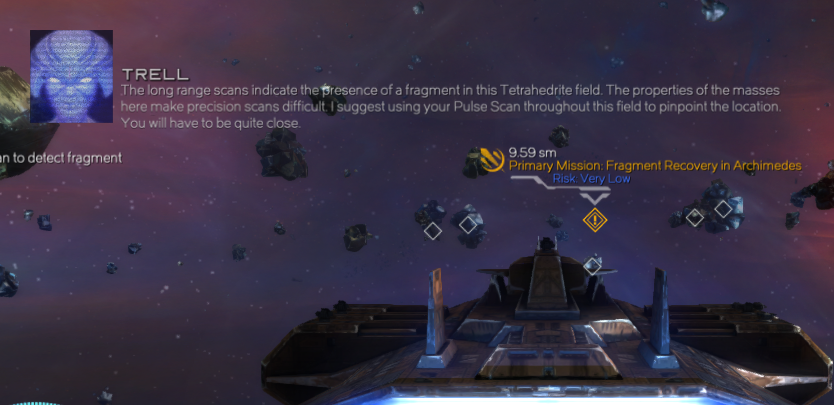
ORDNANCE:
For whatever reason, all missile weapons – and only these and no other weapons – will require the consumption of limited ammunition reserves; these weapons have a statistic called “launch count”, which indicates how many units of ordnance that they consume from their magazines.
Each type of missile weapon has its own ordnance reserve, which is consumed separately from other reserves. The player can refill individual reserves at space stations, though there are a few opportunities to replenish them while in space. It so happens that there are ordnance crates floating around, either as abandoned cargo or the detritus of battle. Retrieving these crates grants a small refill for each reserve.
Ultimately though, there is not much reason to deal with this gameplay element, due to the low utility of missile weapons.
LEECH DE-BUFFS:
There are some weapons which have been labelled as having “leech” capabilities. Leech de-buffs are a combination of video-game EMP effects and viruses; they primarily stall the victim’s engines and slow down shield regeneration, among other effects which are subtler.
Leech de-buffs are perhaps more effective against the player’s ship than against any other ship. This is because leech de-buffs are percentage-based, which means that they are more potent when used against ships with state-of-the-art gear; it is more than likely that the player’s ship will be one of these.
Still, leech missiles are perhaps the only good reason to have to deal with ordnance replenishment. Gimped enemies are easier to take down than fresh ones, after all.
SHIELDS:
As to be expected of a space sci-fi game, Rebel Galaxy has ships protecting themselves with shields which absorb incoming hits. Shields are ships’ first and most reliable line of defense; before any actual damage can be inflicted on a ship, its shields have to be brought down first.
(As a side note, weapons do have so-called shield penetration ratings. However, these appear to work as little more than damage modifiers against shields; shields will always have to brought down first before actual damage can be done.)
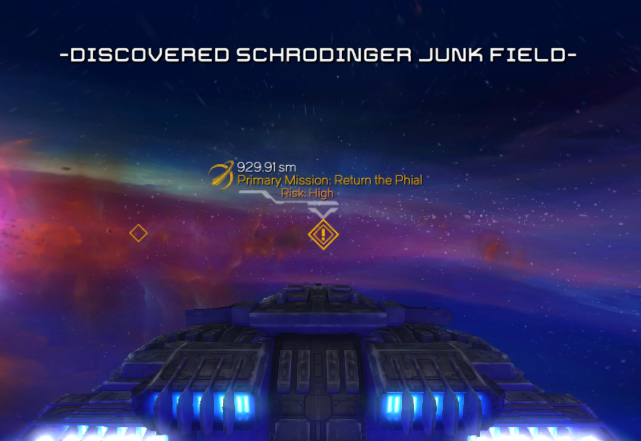
Shields recharge all the time whenever they are diminished. Therefore, any ship can attempt to withdraw from a battle for a minute or two to recharge shields before returning; this is a tactic which enemies will resort to.
Furthermore, in the case of capital ships, there are four regions of shielding for each ship; its front, rear and its two flanks. These recharge separately, meaning that a ship can lose all shielding in one facing and become vulnerable to damage to attacks on that facing. It is important to keep this in mind when dealing with large capital ships.
If there is any problem with the gameplay system of shielding, that would be the UI icon for the shields of the player’s ship. These are represented as arcs, which are colored in a hue of blue that diminishes as the shields take more damage. This would not have been an issue, if not for the fact that the arcs flash pink and white when they are damaged; these flashes do not reflect the damage that the shields have taken thus far.
Therefore, when the shields are taking damage, the player cannot observe how much damage that the shields have taken. There are no other visible visual indicators for this either.
HULL ARMOR:
A capital ship can have hull armor underneath its shields. This armor can absorb damage that would otherwise have been inflicted on hull integrity or ship components. Having damage inflicted on ship components, such as the broadside ports or engines, would have impaired the performance of the ship, and make it even more vulnerable. Therefore, having armor is better than having none.
However, armor comes with a literal price. Hull plating is easily the most expensive component to repair, with the later ones costing up to tens of thousands to restore, even if they are damaged by a little over a dozen percent.
One can argue that this is further incentive not to take damage, but the incredible cost can discourage players from swapping out older hull armor for later ones.
ENGINES & WARPING:
As to be expected of space-faring ships, they have engines which allow them to move about. The player does not need to worry about fuel, but there are engine speed levels to be concerned with. With smaller capital ships, the engine speed levels are not that important because their lower mass makes for easier management of their momentum and turns. However, they are more important for the more massive ships, which can take longer to stop and which do not turn so well at higher speeds.
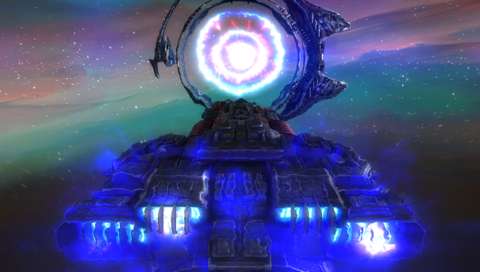
When the player is not in battle and his/her ship is not near any “stellar mass” (as the game describes substantial objects in space), the player’s ship immediately kicks into a speed level that is generally a few times faster than the player’s current engine speed; the game calls this “sub-light” speed. This is a cue for the player to activate warping.
Warping causes the ship to accelerate to incredible speeds, which are needed to cover the vast distances within any current star system. However, coming near just about any large solid object in space, specifically those that ships can collide with, will cause the player’s ship to drop out of warp speed. Coming into proximity with hostile ships also causes this. This limitation is quite understandable.
What is not as understandable though, is the problem with warping, or rather, the control input for warping. It is shared with other actions, such as docking with space stations and hauling in cargo. This can cause a lot of problems. For example, the player might want to warp out of a place as soon as possible, but undesired cargo is floating close to the player’s ship and thus preventing the control input for warping from appearing.
One would think that the developers did not play-test this game so as to discover this source of frustration. It is minor, of course, but it could have been prevented if the control inputs have been more diverse, especially for the computer version of the game.
WARP GATES:
Also colloquially known as “jump gates”, warp gates link one star system to another. However, their significance in the game is mainly as a source of lore. They have next to no gameplay significance, other than to pose the busywork of having to get to a warp gate in order to get to another star system.
SUBSYSTEMS:
In addition to the usual ship components, there are subsystems which the player can install in order to improve certain aspects of his/her ship – at least theoretically.
The problem is that the subsystems which contribute straight upgrades to the player’s ships are incredibly expensive. For example, the subsystem which improves the charging rate of broadsides costs as much as mid-game ships.
As for the cheaper subsystems, their “benefits” are actually features which are associated with user-friendliness. They should have been implemented in the game as part of the user interface in the first place instead of being presented as a purchase option for the player’s ship.
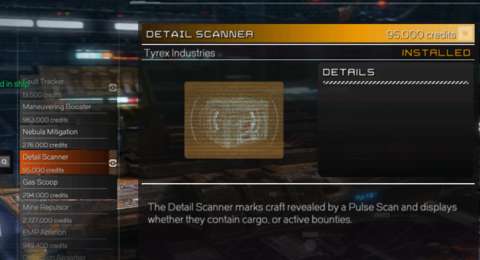
AUGMENTATIONS:
Most of the practical rewards from following and completing story-based missions are money, but a certain character will also provide permanent upgrades to the player’s ship; the upgrades also happen to be transferable from the player’s previous ship to the next one, conveniently.
There are only very few to be had though, so the player should not expect a diverse gameplay experience from this aspect of the game.
PULSE SCANNERS:
One issue that had been around in Privateer-like games is the risk of information overload when looking at the “heads-up-display”, to use a term in the parlance of such games. Although space is large, the pressure to create an exciting experience for the player can lead to scenarios where there are a lot of things on-screen, such as other ships. Trying to design the user interface such that the visual indicators for these things do not clutter the player’s view can be challenging, and it would perhaps be even more so for Rebel Galaxy, which restricts things to a 2D plane.
Rebel Galaxy’s remedy for this is to implement the “pulse scanner”. By default, the visual indicators for objectives (and transponder coordinates; more on these later) will be visible across the current star system. However, any other object of interest that is further than 8 “sqm” away (“sqm” being the game’s unit of distance) is not labelled or highlighted with any visual indicator. Similarly, they will not appear on the player’s sensor map either.
To highlight them, the player activates the pulse scanner, which will highlight any object of interest within a considerable radius, as well as make them appear on the player’s sensor map (or in the case of faraway objects, at the edges of the map). This can result in a clutter of icons in the player’s view; this is especially noticeable when approaching space stations, which have defense platforms around them and more often than not, ships in the vicinity. However, these visual indicators eventually disappear, thus leaving the player’s view clear again.
SENSOR MAP & SECTOR MAP:
The sensor map is often inadequate for just about any purpose. As an example of its inadequacy, it can inform the player of any small fighters that may be in the vicinity, but the icons for opposing fighters are almost of the same colour as the icons of any other opposing ships and loose contraband cargo pods. A colour-blind player may be at a severe disadvantage.

The same issue occurs as well for the sector map view, but the player can at least zoom further into the view, which eventually replace the icons with small ship models. Unfortunately, the ship models are coloured such that they poorly contrast against the background of the sector map anyway, so the player will not be able to reliably identify their class and type.
DEFLECTORS:
Deflectors are practically more shields on top of the regular shields. However, they come with two major differences: they prevent the player’s ship from firing (but not from moving) and they recharge much faster. Therefore, they happen to be useful for escapes. Nevertheless, they can be paired with boosters (more on these later) for some effective maneuvering techniques.
There are a couple of types of deflectors, with the differences between them being merely statistical. There is another particular type of deflector which can be used for the purpose of ramming, but ramming is not a particularly effective offensive technique due to the momentum-dissipating collision physics of the game; this will be described further later.
BOOSTERS:
Last, but not least, of the components within the ship are the boosters. Perhaps it is best to describe boosters as the analogy of nitro boosters for the vehicles in racing games; like the latter, they provide their host vehicle with tremendous acceleration. In the case of the capital ships in Rebel Galaxy, the speed gain can be impressive. If the player had been diligent in purchasing the most state-of-the-art boosters, even a dreadnought-class ship can chase down ships that are supposed to be nimbler than it, even outrun fighters. Moreover, curiously, boosters are barely affected by leech de-buffs.
There are a few different types of boosters, with the differences between them being mainly statistical. However, the Slamjets series are perhaps the most practical in combat; the incredible acceleration provided by the boosters can very easily leave most enemies in the lurch.
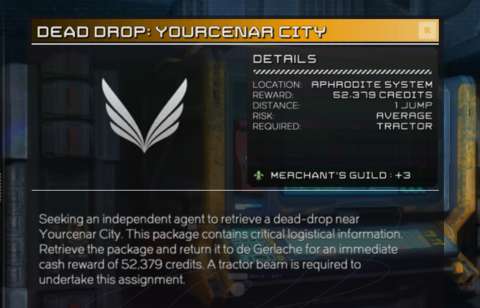
CREDITS:
The main resource to be sought after and consumed in Rebel Galaxy is “credits”, the archetypal currency of space sci-fi games. Much of what the player does will be rewarded with credits in wildly varying amounts; it would be rare indeed if the player sees more than one zero in a multi-digit amount of credits.
Credits will eventually be needed to purchase the next ship (which replaces the previous one) and the components which go into it. If there is any other thing to purchase with credits, that thing will likely be used for the goal of obtaining more credits. This is especially the case for trade commodities, which will be described later.
Unfortunately, observant and calculating players will eventually realize that there are only a few worthwhile ways to obtain credits. This statement will be explained in later sections.
MISSIONS:
The most reliable of the repeatable means of obtaining credits is the pursuit and completion of missions. The player can sign up for missions at space stations, and will generally be paid upon their completion, regardless of where he/she is. To help the player pick missions, each mission comes with a difficulty rating. This rating appears to be dependent on the total cost of the player’s ships, inclusive of components.
However, some missions are simpler to perform than the others, even if their purported difficulty is the same. For example, there are missions where the player needs to kill a target, specifically by destroying his/her/its ship. This is easier said than done, of course; the target is often escorted by other ships, and is often a particularly powerful ship for its weight class. However, if the player can apply overwhelming firepower on the target and then escape with boosters flaring, he/she can escape the wrath of the target’s angry compatriots.
In contrast to the assassination missions, search-and-destroy missions pile a bunch of targets for the player to eliminate. These targets are not tough individually, but they are often close to each other such that their combined firepower can ruin bold strategies.
There are other kinds of missions which stand out from the rest, but not for praise-worthy reasons. These will be described shortly.
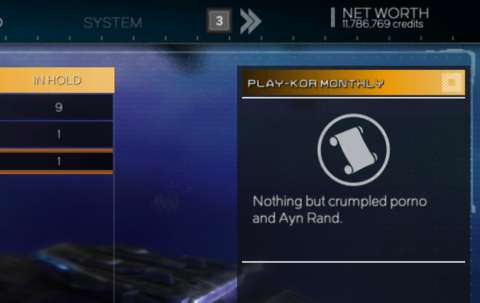
SMUGGLING/SHIPMENT MISSIONS:
Regardless of whether the player is smuggling contraband or transporting innocuous commodities to somewhere else, the player can expect to be ambushed at least twice in such missions. Moreover, the destination space station is often blockaded by hostile ships and heavily seeded with minefields. Even if such missions happen to have so-called low difficulty ratings, the prospect of dealing with a couple of massive encircling ambushes and a blockaded space station can be daunting.
Unfortunately, these missions are needed in order to raise the player’s standing with the Merchants’ Guild. There are other easier missions that achieve the same thing, but these are fewer in number than these ones.
ESCORT MISSIONS:
By far, the most boring and most frustrating missions are the ones which have the player escorting another ship.
They are boring, because the player will have to wait for the escortee to decide on its path to take, the escortee is often not as fast as the player’s ship and the escortee’s engines often take a while to shift to sub-light speed.
The most which the game did to assuage such problems is to provide the player with scripts to automatically align the player’s ship with the escortee and have it follow the escortee without any movement input on the player’s part. In fact, the escortee does not appear to warp towards its destination if the player does not move into formation with it.
These missions are frustrating, because the escortee is as stupid as any other computer-controlled ship in the game. It attempts to pass through asteroid and junk fields more often than not when warping, thus resulting in unnecessary delays.
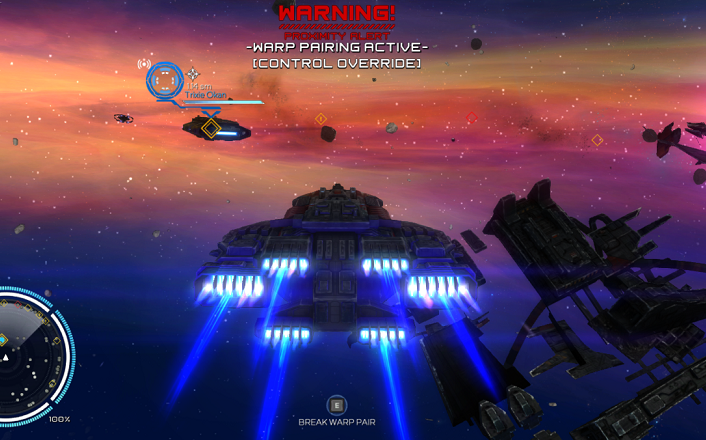
Furthermore, the escortee tends to get involved in fights when there are hostile ships in the vicinity, thus further compounding the difficulty of such missions.
All these could have been avoided if there are ways to have the player take charge of the escort mission. In fact, competently designed games have such tools, such as ordering the escortee to follow or stop. Rebel Galaxy does not do that.
COLLISION PHYSICS:
One of the most underwhelming aspects of the game is its physics system. It is very simple, and that statement does not include the consideration that the gameplay is restricted to a 2D plane.
The lackadaisically implemented physics-scripting can be seen when ships collide with other ships or other things. The first ship simply loses its momentum, imparting almost no momentum to whatever it collided with. In fact, it is a sticky collision; if the player does nothing to move his/her ship directly away from whatever it collided with, it will continue to adhere to the latter, thus causing continuous shield damage.
Here is also a lost opportunity to make combat more sophisticated. Ramming other ships to disorient them would have been a great tactic, but that could not be done here because of the sticky collisions.
SPACE STATIONS:
In order to register for missions, conduct trade and refit the player’s ship, the player must dock his/her ship with space stations. Every planet in a star system has its attendant space station, though there are space stations that are simply orbiting around the star. Even if the player’s ship appears to be just as large as a space station, it can still dock.
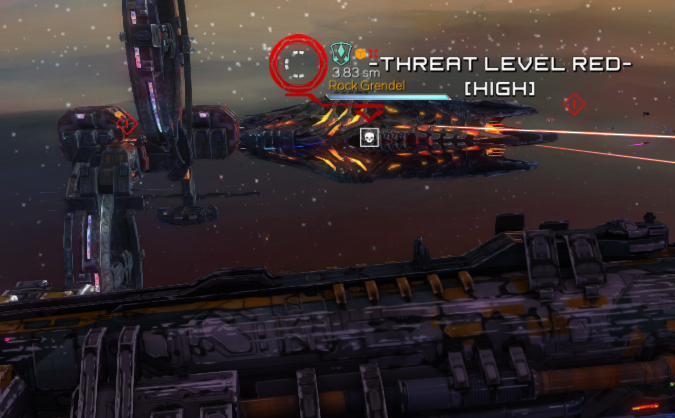
Space stations can actually be destroyed, though it is not in the player’s interest to have this happen. Other than quitting a session, docking with space stations are the only way to trigger an auto-save. Furthermore, space stations are the only places where the player can repair his/her ship without the use of Repair Bots (which are very slow at doing what they do). Space stations are also where the player can buy commodities in bulk, assuming that the space stations are stocking them.
For better or worse, coming too close to a space station automatically causes the player’s ship to dock with it. This can be a minor problem when the player tries to leave the space station, because any maneuvers to move around the space station might cause the player’s ship to drift too close to it, thus triggering the automatic docking.
The player’s ship will not be the only one visiting space docks. To Double Damage’s credit, they have created behavior and event scripts which have merchant and militia ships making rounds between space stations. This can either provide opportunities or cause hindrance. For example, visiting merchants provide trade opportunities whereas visiting militia ships might cause a problem if the player is hauling contraband.
If Rebel Galaxy has other moments like these, Double Damage’s attempt to portray a believable semblance of life in sci-fi space would have been more interesting.
TRADING:
In Rebel Galaxy, trading is the act of acquiring commodities so that they can be sold elsewhere. This is putting it simply of course.
Commodities are obtained mainly through buying them at space stations, preferably those which are experiencing a surplus. They can also be obtained through scavenging the detritus of battle; many ships happen to carry a little bit of cargo, which the player can grab after they are destroyed. Alternatively, the player can also attempt to shake down cargo ships, though this is not always a guarantee.
Outside of the aforementioned cargo-hauling missions, the value of the player’s cargo does not appear to be a factor in attracting pirates, which is a lost opportunity to introduce a bit more sophistication to the game.
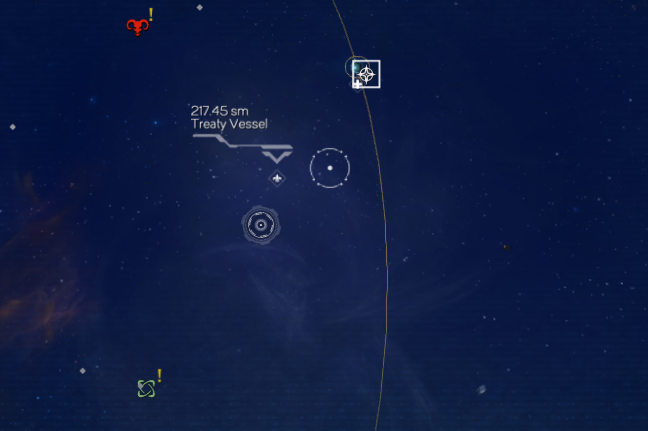
Getting a good price for the player’s cargo can be difficult. Prices fluctuate easily, mainly due to randomized events which occur in the current system every half hour or so. The player can try to keep up-to-date with the news by looking at the news boards at space stations or speaking to bartenders and traders, but events happen so quickly that the window of opportunity to exploit price changes can be quite narrow.
Trying to influence prices by manipulating such events is a fool’s errand, because the time and effort needed to do so are often so considerable such that by the moment that the player has instigated an event, the player has only a narrow window to capitalize on it before other events pop up and undo the player’s work.
Most importantly, even if the player can make a profit by trading commodities, including even via illicit means, the player could have made better money by spending the time on completing missions instead.
(There are also scenes which suggested that there could have been a feature to make use of commodities for manufacturing purposes. These can give an impression of lost opportunities for more gameplay elements.)
TRADERS & MERCHANTS:
Even though they are not the most maneuverable ships around, cargo ships in the frontier are rather well-armed. Nevertheless, they get waylaid a lot anyway.
Unless the player has already decided on having piracy and smuggling as the primary means of obtaining revenue, the player can hail the cargo ships and talk to the traders and merchants who run them. If the player is in good standing with the civilians of the sector, or the Merchant’s Guild, he/she has the opportunity to exchange a few units of goods with them.
This may not seem like much; after all, the player can trade at greater volumes at space stations. However, an astute player might notice that the traders and merchants are offering prices that are quite different from the average market prices for commodities. If the player’s relationship with civilians and the merchant’s guild is warm, the prices may be generous. To maximize the profits from such opportunities, clever players would carry valuable cargo such as Meteoric Diamonds and Alien Artifacts around.
Particularly observant players may also notice that the traders and merchants will offer buying prices for randomly selected goods, including contraband. By ejecting various types of cargo before hailing traders or merchants, the player can influence what goods that they would like to buy. (By the way, the traders do not appear to get into trouble if they bought contraband from the player before going near militia ships.)
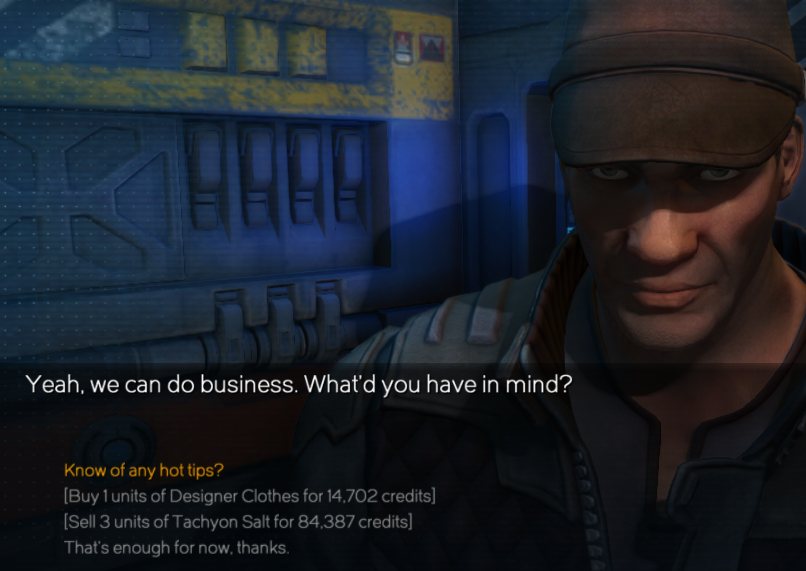
For better or worse, this highly exploitable form of trading is the only worthwhile trading in the gameplay of Rebel Galaxy.
(GENUINE) DISTRESS SIGNALS:
Speaking of traders and merchants, the player is most likely to encounter them when responding to distress signals, which appear to be random events. Civilian miners which are under attack by particularly vicious rival miners will also emit distress signals.
If the player comes over and destroys their attackers, he/she will be rewarded with some money and increased relations with the civilians of the current sector, as well as the Merchants’ Guild if the player saved cargo ships. However, this also comes with decreased relations with the faction which the attackers belonged to; these other factions will be described later.
Interestingly, not all (genuine) distress signals are random events. If the player can lure a bunch of hostile ships, such as Red Devil pirates, over to a trader ship, the trader will emit a distress signal, which the player can respond to and exploit. Of course, engineering such incidents is easier said than done, and the reward money is not substantial enough for the trouble to be worthwhile.
Of course, there are fake distress signals, set up by pirates as lures. Amusingly, they are easy to differentiate from genuine ones; a ping from the pulse scanner will reveal the presence of only hostile ships around these signals.
TRANSPONDERS:
The player may find derelict transponders lying about; in the lore of the game, they are telecommunications devices which have been abandoned but which are still active. The player will be notified of any nearby transponders, after which the player may track them down and ‘hack’ into them. Doing so yields information about clusters of asteroids with rich ore or caches of cargo and equipment, the latter being the more valuable of the two.
Alternatively, the player may also obtain information about bounties, after which visual indicators that show the last-known positions of some individuals with bounties will appear in the sector map.
CARGO CONTAINERS:
The player might come across cargo containers which are floating around in space, apparently abandoned or released when a ship is destroyed. Salvaging the contents of these cargo containers is as easy as getting close and holding down a button; the player does not need to resort to the slow process of tractor beaming.
The most lucrative contents of a cargo container are its credits and, if the player is lucky, any ship component. The latter occurrence is often the only way to obtain special ship components which cannot otherwise be bought, such as the particularly long-ranged Viridian laser turrets. Even if the components are obsolete, they can still be hoarded and sold off later for considerable cash. After all, surplus components do not count towards the cargo storage limit.
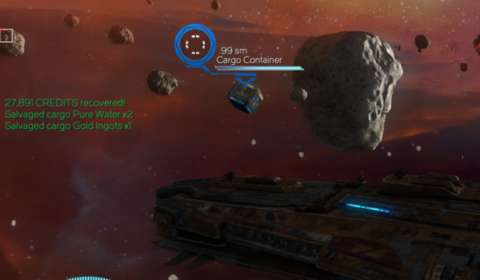
SCANNING OBJECTS:
The pulse scanner does not reveal the presence of cargo in ships, at least not by default. It can detect ships with bounties on them, but not tell which ones have them, also not by default. Furthermore, it will not inform the player about the exact load-out of a ship.
To know all that, the player must go into scanning mode, which slows down time and allows the player to select individual objects within range (which is not very far) so as to scan them. Scanning is a quick process, though it might seem like the expression of the aesthetic trope of electronic dribble being displayed line-by-line.
There is a problem with scanning objects though. It is difficult to switch from target to target in the scanning mode, because the scripts which queue objects in the cyclic selection are rather unpredictable. The player can work around this by resorting to turret aiming or camera manipulation to lock onto the target which the player wants to scan before switching to scanning mode. After that, the target will be selected by default. However, this is not compensation for the lack of user-friendliness in the scanner.
MINING:
As to be expected of a present-day Privateer-like game, mining in Rebel Galaxy follows the usual formula of destroying asteroids to release their ores. This crudeness would irk players who want a more believable and complex endeavor.
Unfortunately, mining is a time-consuming method of gaining credits. This is because not all asteroids in a field contain resources, and even if they do, they may be cheap resources, such as the near-worthless Metallic Ore. There are asteroids with rare materials, such as the Face of Gozu, but there are few reliable ways to identify which asteroids have them.
For example, asteroids which do not look like grey, misshapen moons tend to have valuable materials. However, this is not a guarantee; pulse scans might reveal that they are worthless, and even if they have ores, detailed scans might reveal that they carry lousy yields.
The game tries to spice up this activity by implementing a mechanism of weak spots on asteroids that the player can shoot with mining lasers in order to triple yields. However, this mechanism is luck-dependent: the triple yields are not a certainty.
Perhaps mining could have been a more worthwhile endeavor if the player can have some means of knowing which asteroid has good ore via pulse scans. However, there appears to be no such feature of convenience.
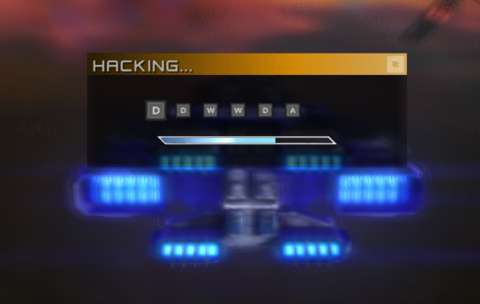
If there is anything good to be had from the activity of mining, it is lore-centric and even if it has gameplay significance, it is out of the player’s control. The player will often see mining vehicles buzzing about in asteroid fields, shooting asteroids at random.
Interestingly, if the player waits long enough, they will eventually return to a nearby space station to deposit their hauls. Even if the player has scanned them and discovered that they have no cargo, that space station will gain mineral resources from them anyway. If the player is elsewhere, the replenishment of minerals at space stations will still occur anyway.
BOUNTIES:
Some ships have bounties on them, supposedly for a variety of reasons and posted by different parties. Most ships with bounties happen to be pirate ships, with the biggest bounties being those for pirate lords (which have their own special markers and even a place in the news boards). For example, the ships which wait in ambush at fake distress signals are very likely to have bounties on them. However, the player may also find that some militia ships have bounties on them as well, presumably set by criminal organizations who have a vendetta against the militia.
Anyway, landing the killing blow on a ship with a bounty grants the player monetary rewards, but nothing else. The amounts of the rewards are not particularly substantial. In fact, some can be meager, and the player would not know what he/she would get until the target has been destroyed. Generally, more formidable targets have higher bounties, but this is not a guarantee. This can make full-time bounty-hunting a rather inefficient source of revenue.
MERCHANTS’ GUILD AND MERCENARIES’ GUILD:
One of the tropes of Privateer-like games, or more precisely, Space Ranger-inspired titles is the presence of “guilds”. According to this trope, these so-called guilds tend to be little more than hobby clubs. The guilds in Rebel Galaxy are not an exception.
There are two known guilds which the player can join in the current build of the game at this time of writing: the Mercenaries’ and Merchants’. Joining them – membership in either is not mutually exclusive, by the way – allows the player to make use of the services of the space stations which are affiliated with them.
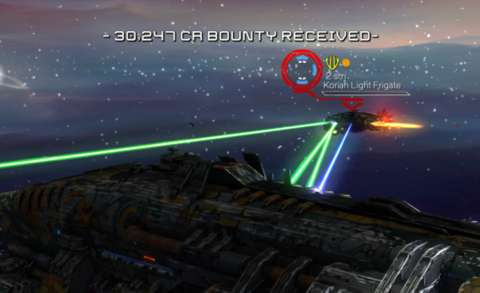
The more enticing benefits of membership are access to ship types and components which are not available in other space stations. For example, the Merchants’ Guild has premium cargo extenders that are far more efficient than the standard ones, whereas the Mercenaries’ Guild has ship types that are rather well-armed and are more mobile than other ships of their weight class.
More things will be unlocked as the player gains ranks in these guilds. Unfortunately, gaining ranks is a matter of busywork. The player will need to repeatedly complete missions for these guilds, and, as mentioned earlier, some of these missions can be problematic.
MILITIA & CONTRABAND:
Every star system has its own militia. Despite its label of “militia”, the militia is incredibly well-equipped. Their ships are often powerful bruisers, right up to the so-called “Scientist” dreadnought, which is very well-armed. The militia is mainly there to protect civilian ships and most space stations. There are also patrols going around, looking for pirates to obliterate.
Even if the player is in good standing with them, the militia generally ignores the player, even when asked for assistance. However, they will scan the player’s ship if it gets close enough. If the militia detects contraband aboard the player’s ship, he/she will need to relinquish it or face immediate hostility from any nearby militia vessels. Any nearby space station under the militia’s protection also becomes hostile. (The player can bribe them too, but this is usually not worth the trouble.)
Generally, players who prefer to remain on the ‘right’ side of the law will not have a problem with the militia, but the player will need to decide on this very early on in the game. Maintaining a balance between the two sides of the law is incredibly difficult.
RED DEVIL CARTEL:
If the player wants to take the criminal path in Rebel Galaxy, the player will need to decide on this very early on. The civilians and militia of any system will become hostile towards the player, and it is very hard to earn back their good graces without angering the underworld in turn.
Anyway, if the player chose the criminal path, e.g. shaking down traders and attacking militia ships, the player has the opportunity to become ‘friends’ (albeit very fickle ones) with the Red Devil Cartel, which is the biggest organized crime group in the frontier. In fact, they have a considerable number of space stations, most of which deal in contraband. The Red Devils also have powerful ships to bring to bear.
Yet, an astute player might realize that he/she is merely exchanging the Militia and Civilians for the Red Devil Cartel. Other than the freedom to deal with contraband and access to ship types which are associated with the Cartel, there are few other perks to be had from being on the wrong side of the law.
Furthermore, it can be difficult to maintain relations with the Red Devil Cartel, because some of its members will be inherently hostile to the player. These include those which have set up ambushes with distress signals as lures, and some missions for the guilds may have the player going up against the Cartel.
MURATH, GREEL AND KORIAN FACTIONS:
Double Damage might have planned to include more factions into the game, namely the factions which are associated with the non-human species. Unfortunately, their inclusion in the game is not as well-developed as that for the Militia, civilians or Red Devil Cartel. These factions are mostly play piratical roles. There are few opportunities to curry favour with them, and little incentive to do so either. Perhaps they could have been a reliable source of special ship components, but as to date, this has not happened. Indeed, not much has been done with these factions at all.
OUTSIDERS:
Curiously, there is a faction of sorts which will have absolutely no relations whatsoever with the player. They are simply called “outsiders”, presumably because they did not originate in the frontier. Other than their space stations offering specific ships that are not found elsewhere, there is no other significance to this faction.
HIRED MERCENARIES:
As to be expected of a Privateer-like game, Rebel Galaxy will have the player working on his/her own most of the time. However, the player can choose to hire mercenaries at space stations. Unfortunately, this feature is half-baked.
Firstly, the player cannot give specific orders to any hired mercenary. The most which the player can do is set his/her/its behavior, just like with turrets. This already severely limit their usefulness.
Secondly, the player can only ever hire just one mercenary. Considering that some capital ships, especially those with the Militia, are accompanied by entire squadrons of fighters, this is a particularly glaring omission.
Thirdly, hired mercenaries always pilot fighters. These are more powerful than other fighters of the same type thanks to their owners’ personal customization, but they will not hold up in a fierce fight between capital ships.
Fourth, the mercenaries suffer from the same lousy pathfinding scripts that escortees have in escort missions. Granted, they are flying in fighters, which are a lot nimbler, but the player will still notice them getting stuck on objects in space. Considering that they are supposed to follow a much larger and ungainly vessel around, they are doing a terrible job.
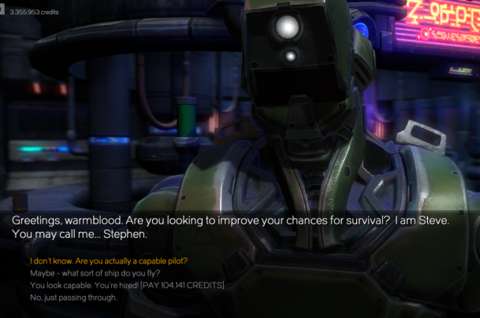
Fifth, there is the measure which the developers have implemented to compensate for the mercenaries’ poor pathfinding. If the player’s ship has moved quite far away from them – and this will happen, more often than not – they are simply re-spawned close to the player’s ship. This might seem useful, but the player has no control over where they re-spawn. They may end up colliding with something, or worse. This can be seen when the player travels too close to a massive celestial body, such as the planetoids in the game; a mercenary might re-spawn in their atmosphere, and is subsequently destroyed.
The player does not lose a mercenary permanently if the mercenary’s ship is destroyed; they will supposedly eject and get to safety. However, considering the aforementioned problems with their gameplay designs, it is generally a waste of money to hire them in the first place.
ENEMIES & PROBLEMS IN THEIR DESIGNS:
As had been mentioned or implied several times already, the player will be engaging in combat. The player will be outnumbered most of the time and indeed, getting caught in the midst of many enemies is often certain doom. For the purpose of avoiding this, there is a threat meter of sorts which tracks the number and total power of enemies which are pursuing the player.
However, observant players will figure that just about every enemy in the game is rather stupid, with no semblance of strategy at all. When hostile ships detect the player’s own, they attempt to approach, often along the nearest route to the player’s ship. One would think that this would be easy for them when they are in space (even though it is 2D space), but they can still get stuck in a lot of things.
Furthermore, even if they were spawned as squadrons or flotillas, they do not make an effort to stay together. Even if they seem to be doing so, it is only because the paths that they took to pursue their target have coincidentally brought them together.
It would not take long for an observant player to figure out how to pick off enemies as they fall out of formation.
VISUAL DESIGNS:
Considering all the problems in the gameplay, it can be easy to believe that the bulk of the development effort for the game had gone elsewhere instead, such as the graphical designs.
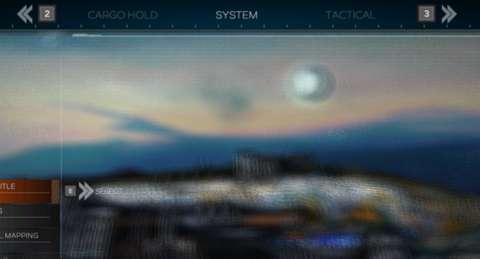
Promotional screenshots and videos will show that the game is quite pretty, and indeed it seems so. The game does not lack in the amount of particle effects. The models for capital ships, in particular, are very well-detailed, though their turrets may seem like they had been tacked onto their hulls.
Fighters would appear to have detailed models too. However, the camera is designed to provide the player with a full oblique view of his/her ship, so in the case of a very large ship, fighters will appear on-screen as barely noticeable specks, especially when seen against the backdrop of space. The game tries to compensate for this by highlighting fighters which are close to the player’s ship.
Yet, there is another problem; fighters, especially those which appear later in a playthrough, can already start firing long before they are highlighted by the user interface. Perhaps this problem could have been solved by automatically highlighting any enemy that is attacking the player’s ship, regardless of range, but the developers had not thought of this.
SOUND DESIGNS:
Although frontier space is not exactly the same as the American frontier of the 19th century, Double Damage has made certain that just about every human character in Rebel Galaxy has a Southern American accent. This accent is particularly noticeable for traders and merchants.
As for the aliens, the bulk of them talk in alien gibberish, which has no discernible sentence structure but is sometimes interspersed with the names of characters. Even though they have no structure, their lines happen to be recycled over and over, as an astute player would notice.
The sound effects are as much as to be expected in a space sci-fi game. There are zings of lasers, artificial and harsh bleeps that accompany energy projectiles and the whooshes of missiles. There would not be anything that a jaded player had not heard.
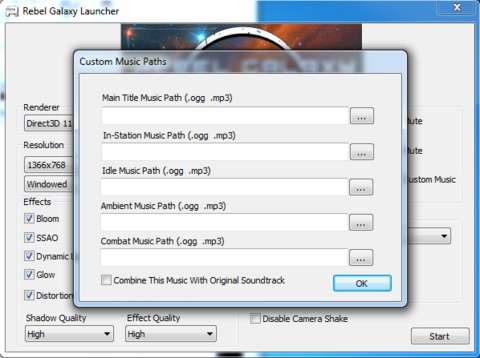
Perhaps the best aspect of the sound designs of Rebel Galaxy is the music. Double Damage has chosen some notable songs, such as Blues Saraceno’s “Evil Ways”. There are not many tracks though, so a player who has put in more than a dozen hours into the game will have heard them all at least once. For a player who has sunk even more hours, he/she might want to consider making use of a feature to switch to other tracks or include them in the in-game playlist.
SUMMARY:
Considering the length of this review and the number of gameplay elements which have been described in it, Rebel Galaxy could have been a sophisticated game. Unfortunately, many of these gameplay elements do not do much more than what other Privateer-like games have done. There were moments when it seems to be more, such as when watching trade ships make rounds between space stations, but the game does not become any more complex than these.
If the gameplay elements are not wasted opportunities, then they are half-baked. Boosters and Deflectors are perhaps the only gameplay elements in Rebel Galaxy that are well implemented, or at least without problematic issues. The others have so many caveats, or are held back by the game’s use of a 2D plane.
Rebel Galaxy may seem like a lot when one considers that Double Damage is practically only a pair of software developers who have support only from musicians and other artists, but it is not the only game out there which has been made by small teams. More importantly, there had been better-realized games from small independent teams. Considering these, Rebel Galaxy does not deserve any benefit of the doubt.
